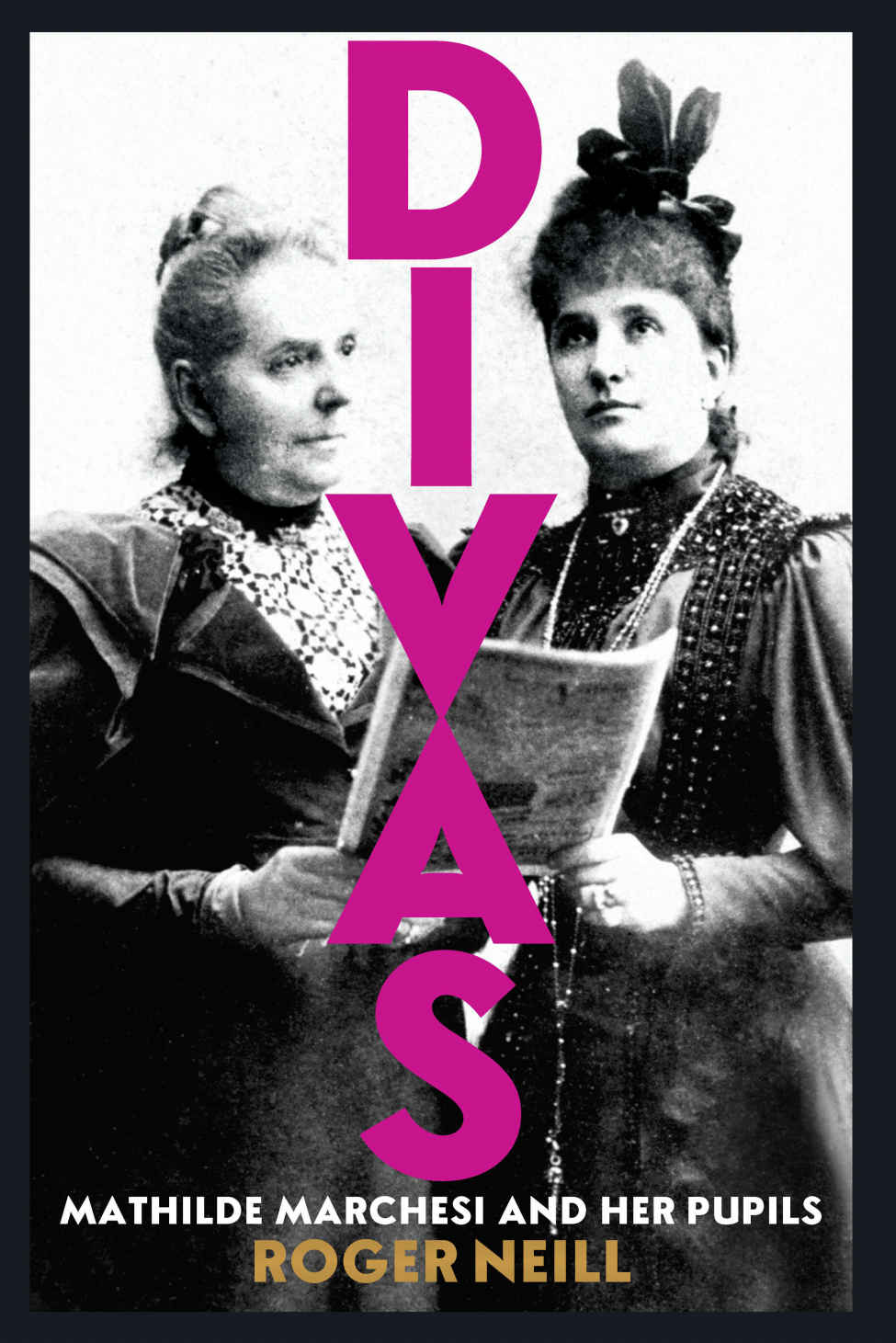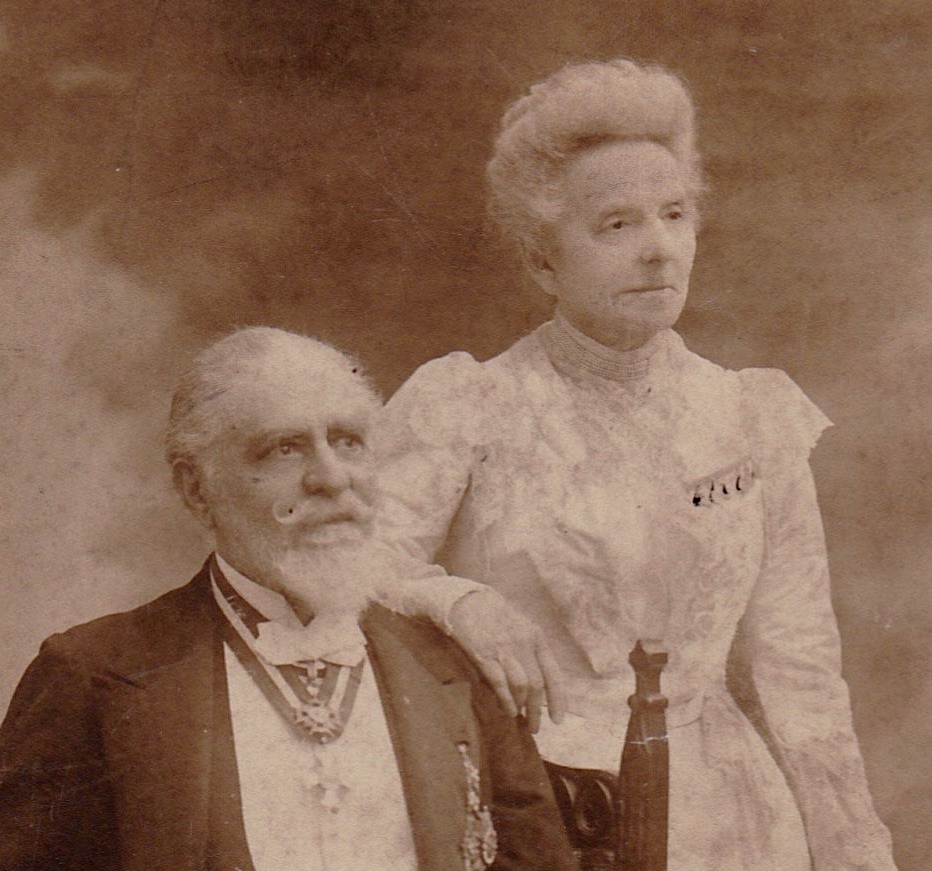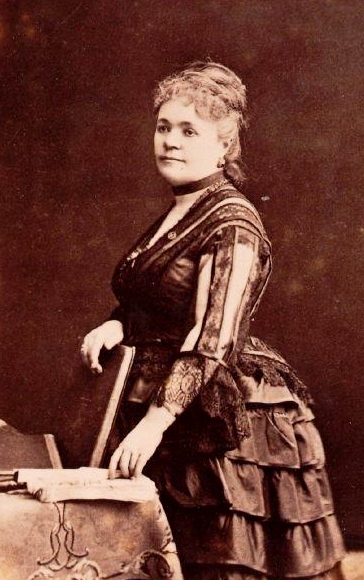
 (Salvatore and Mathilde Marchesi, courtesy Charles Mintzer)
(Salvatore and Mathilde Marchesi, courtesy Charles Mintzer)DIVAS, Mathilde Marchesi and her pupils by Roger Neill

 (Salvatore and Mathilde Marchesi, courtesy Charles Mintzer)
(Salvatore and Mathilde Marchesi, courtesy Charles Mintzer)
431 pp New South Publishing (the book is also available as ebook/epdf)
ISBN 9781742235240 (Hardback)
In spite of several shortcomings this new biography of Mathilde Marchesi (born Graumann, 1821 – 1913) is a must-buy for anyone interested in the history of singing, singing schools and the Marchesi legacy.
For a decade the currently London-based author was chairman of “Endymion” a music chamber ensemble specializing in contemporary classical music, and is according to the book cover now secretary of the Historic Singers Trust. Why on earth the book cover also has to mention Mr Neill began his working life as a professional rock musician is a mystery to me. Rock pollution is exactly the opposite of the world Marchesi stands for. Probably the brilliant idea of a PR guy at the publisher's hoping the Mick Jagger addicts will buy a book on Marchesi. Idiocy at its most extreme. Oh well, now to the book.
On 436 pages covering 10 chapters Roger Neill captures the incredible story of singing teacher Mathilde Marchesi who trained more international female opera stars than anyone before or since and this during a five decade career starting in nineteenth century Vienna and ending in twentieth century Paris. The author as well discusses a remarkable cast of composers with Felix Mendelssohn, Franz Liszt, Charles Gounod, Camille Saint-Saens, Jules Massenet, and Ambroise Thomas to name but a few. They intertwine with the great amount of students who crossed the globe to study with Marchesi culminating in her “étoile” and featured on the cover of the book alongside her teacher, Nellie Melba, arguebly her most famous student.
Marchesi’s story and above all that of her pupils is initially told through the positions she held at various conservatories and later as an independent teacher. While the private person of Mathilde Marchesi often remains too much on the surface for this reader, that of her students luckily isn’t. What a life and character these “divas” had : often possessing dysfunctional personalities, unhappy marriages, countless divorces, many of them ending up in poverty and facing early death. Roger Neill tells it all in great and fascinating detail. Marchesi herself wasn’t spared of tragedy surviving her husband Salvatore and all of her children except Blanche. Revealing and completely new for me are the stories about the influence of Eduard Hanslick on the Marchesis and Blanche’s conversion to Judaism. In all this a very successful book. Less efficacious is the author when talking about Rosine Laborde (1824-1907) a major teacher 'concurrente' of Marchesi in Paris and who taught Calvé, Delna, Héglon, Korsoff, Gerville-Réache, Mérey etc. For details about Laborde's life and career he solely relies on what Calvé says in her biography 'My life" which makes me wonder whether Mr Neill reads French.
 (Rosine Laborde)
(Rosine Laborde)
Listen to Blanche Marchesi and her students
Listen to Salvatore Marchesi's "La folletta" performed by Erna Sack or by Rita Streich
Neill concludes the book with a chapter on Marchesi’s “magical method” which is a summary of Marchesi’s thoughts and methods based on her original writings, and some of her pupils’ memories. Yet, we never get a hint on what the actual cost of a Marchesi lesson was. How much did these students have to pay? Moreover, whenever money is quoted in the book we never get a reference to what the amount would actually mean in today’s value. Very welcome are two appendices. One is an impressive chronology of Marchesi’s pupils whether private or at the conservatories she taught. Striking that there are hardly any Italians amongst her students and as close as Paris is to Belgium only one compatriot of mine studied with her : Blanche Arral. I wonder why?
The second appendice –more questionable- has “Marchesi’s lineage and legacy”. Questionable because who can or should be called a Marchesi student and here the author often goes for arbitrary choices. Is it someone who studied with her and for how long? Coached with her? Studied with a student of hers etc. I for instance wouldn’t call either Elisabeth Schwarzkopf or Kiri Te Kanawa her pedagogical grandchildren. Schwarzkopf was mainly and above all formed by Maria Ivogun, ditto for Kiri Te Kanawa by Vera Rosza. And while John Freestone studied with Blanche Marchesi his student Laurence Dale is not mentioned. So this survey may lead to healthy and informative debate amongst its readers.
Yet what the books lacks was serious editing. The author often repeats himself on various pages, often he also rambles from one subject to the other. On occasion there is also a lack of consistency in names of operas and the characters involved. Most of the time he opts for the original names of the operas but then all of a sudden we get William Tell instead of Guillaume Tell, Urbano instead of Urbain in Les Huguenots, he rightfully goes for Le Prophète yet Berthe becomes Bertha etc. We also get the eternal spelling mistake of tenor Ernest Van Dijck’s name as van Dyck. Liège is not the capital of the French speaking part of Belgium, that is Namur. Annoying spelling errors are Audrun for Audran, Susel for Suzel in Mascagni’s l’Amico Fritz, Pêches Melba for Pêche Melba, Dagblat for Dagblad, Selma Niklass-Kemper for Selma Nicklass-Kempner, Conrad V Bos for Conrad V. Bos, Halben for Halban, touterelle for tourterelle, Lydia Holmm for Lydia Holm etc.
The book is illustrated with 33 photographs not always in the best of quality. A detailed index is included.
Click here for 2 interview with the legendary singing teacher !!!!!
Rudi van den Bulck, May 2017